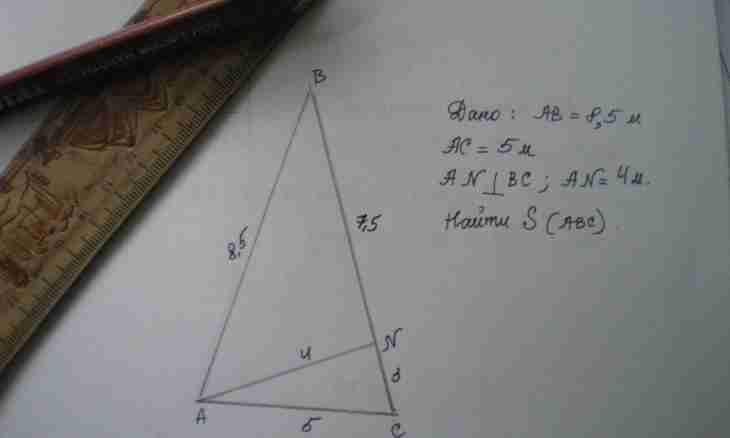At an isosceles triangle two parties are equal, corners at its basis are equal too. Therefore heights which are carried out to sides will be equal each other. Height which is carried out to the basis of an isosceles triangle will be at the same time a median and a bisector of this triangle.
Instruction
1. Let height of AE be carried out to the basis of BC of an isosceles triangle of ABC. The triangle of AEB will be rectangular as AE is height. The side of AB will be a hypotenuse of this triangle, and BE and AE - its legs. On Pythagorean theorem (AB^2) = (BE^2)+ (AE^2). Then (BE^2) = sqrt ((AB^2) (-AE^2)). As AE at the same time and median of a triangle of ABC, BE = BC/2. Therefore, (BE^2) = sqrt ((AB^2) (-(BC^2)/4)). If the corner at foundation of ABC is set, then from a rectangular triangle height of AE is equal to AE = to AB/sin (ABC). BAE corner = BAC/2 as AE is a triangle bisector. From here, AE = AB/cos(BAC/2).
2. Let BK height to AC side be carried out now. This height is not either a median, or a triangle bisector any more. For calculation of its length there is the general formula. Let S be the area of this triangle. The party of AC on which height is lowered can be designated for b. Then from a formula of the area of a triangle there will be length BK height: BK = 2S/b.
3. From this formula it is visible that height which is carried out to the party with (AB) will have the same length as b = c = AB = AC.

